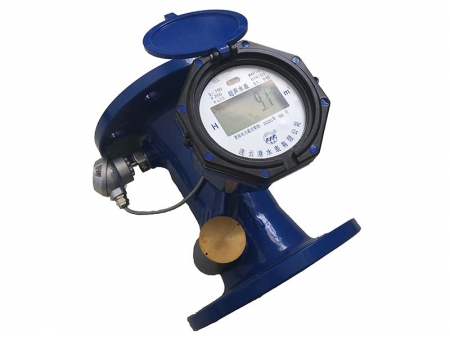Ultrasonic Water Meter with M-BUS Interface
Our ultrasonic water meters, equipped with an M-BUS interface, stand as a proof of our commitment to innovation and excellence in water management technologies. Utilizing advanced ultrasonic flow measurement principles, this water meter accurately captures both instantaneous and cumulative water flow under rated working conditions. Meeting the stringent standards of GB/T 778, it showcases our ability to combine industry-leading expertise with practical, user-friendly solutions.
| Nominal diameter | Overload flowrate Q4 | Permanent flowrate Q3 | Transitional flowrate Q2 | Minimal flowrate Q1 | Resolution of reading | Maximum reading |
| DN | m | h | m² | |||
| 50 | 31.3 | 25 | 0.16 | 0.1 | 0.1 | 9,999,999 |
| 65 | 50 | 40 | 0.25 | 0.16 | ||
| 80 | 78.75 | 63 | 0.4 | 0.25 | ||
| 100 | 125 | 100 | 0.64 | 0.4 | ||
| 125 | 200 | 160 | 1 | 0.63 | ||
| 150 | 312.5 | 250 | 1.6 | 1 | ||
| 200 250 | 500 | 400 | 2.52 | 1.6 | ||
| 787.5 | 630 | 4 | 2.5 | |||
| 300 | 1250 | 1000 | 6.4 | 4 | ||
| Model | Length L | Height H | External diameter of flange D1 | Bolt circle diameter D2 | Connection bolt n-M |
| mm | mm | ||||
| 50 | 200 | 264 | 165 | 125 | 4-M16 |
| 65 | 200 | 270 | 165 | 145 | |
| 80 | 225 | 300 | 200 | 160 | 8-M16 |
| 100 | 250 | 310 | 220 | 180 | |
| 125 | 250 | 285 | 250 | 210 | |
| 150 | 300 | 335 | 285 | 240 | 8-M20 |
| 200 | 350 | 405 | 340 | 395 | 12-M20 |
| 250 | 450 | 490 | 405 | 355 | 12-M24 |
| 300 | 500 | 550 | 460 | 410 | |
- Offers R250 range ratio, with R400 available for specialized needs.
- Thanks to their LCD display, these water meters show accumulated flow, instantaneous flow, water temperature, and meter identification details.
- Fully sealed components ensure operation even when submerged; according to IP68 protection.
- Tracks and collects data over time, including year, month, and day records.
- Equipped with M-bus (default) and RS-485 interfaces.
- Compatible with CJT-188 (default) and Modbus communication protocols.
- Ultrasonic flow measurement technology allows for multi-angle installation without affecting accuracy.
- Powered by a built-in lithium thionyl chloride battery, ensuring over 6 years of service.
- Temperature class: cold water meter: T30; hot water meter: T30/90
- Environmental class: O
- Electromagnetic environmental class: E1
- Maximum admissible pressure: 1.6MPa
- Pressure loss class: Δp25
- Upstream flow field sensitivity class: U10
- Downstream flow field sensitivity class: D5
- Protection class: IP68
The demand for our ultrasonic water meters spans various fields, including agricultural irrigation, urban water systems, and smart city infrastructure:
- Agricultural irrigation: Can be used in agriculture, this meter thrives even in challenging water conditions, ensuring farmers get accurate readings without the typical hindrances of debris or sediment.
- Urban and smart city infrastructure: As cities grow smarter, our meter fits right in, providing crucial data for efficient water distribution and management.
- Industrial settings: In industries where every drop counts, our meter delivers precise measurements, playing a vital role in conserving resources and optimizing operations.
- Intelligent water management in industrial production.
How does the ultrasonic measurement principle work?
The ultrasonic water meter operates on a simple yet ingenious principle: it measures the time difference between the emission and reception of ultrasonic waves. By doing so, it can accurately gauge the speed and volume of water flow without any physical contact with the water itself. This non-intrusive measurement approach enhances the meter's precision and reliability, making it a favored choice in various applications.
What types of ultrasonic water meters are available?
Ultrasonic water meters harness ultrasonic technology to measure the velocity of fluid. There are primarily two common types:
- Transit-style ultrasonic meter: These meters measure the time it takes for ultrasonic waves to travel between two transducers, providing accurate flow data.
- Doppler-style ultrasonic meter: These meters use the Doppler effect to measure the change in frequency of the ultrasonic wave as it reflects off suspended particles or air bubbles in the water, ideal for water with high particulate content.
